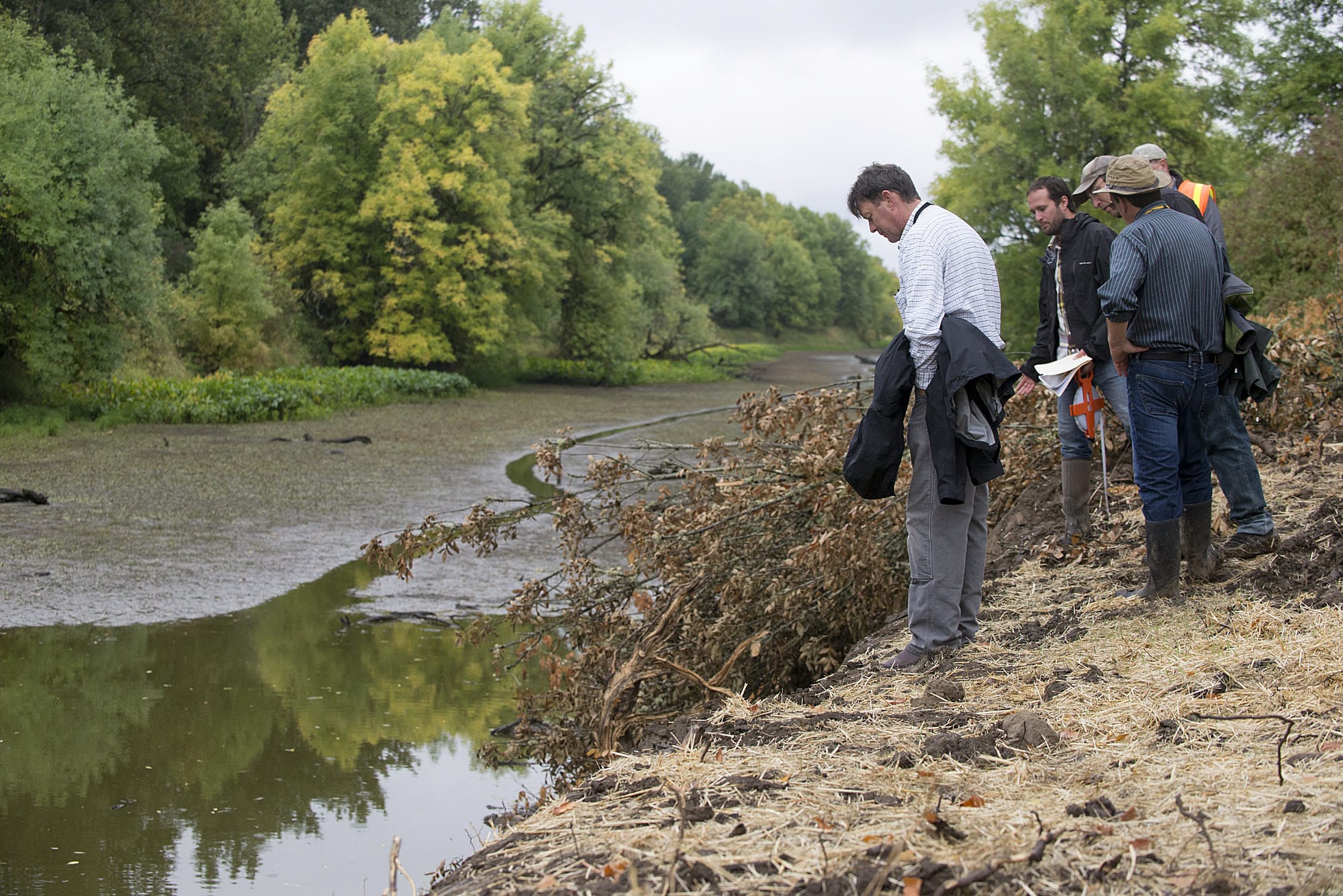Until this month, it’s safe to say the habitat around Buckmire Slough near Vancouver Lake left something to be desired.
The area is home to fish and other wildlife. The problem: It was also home to about 30 old tires and a few assorted car parts, said Tom Josephson, habitat restoration project manager with the Columbia River Estuary Study Taskforce. Josephson found pond turtles perched on some of the tires, he said.
Josephson’s organization is leading a project that aims to restore habitat in the area and improve water quality on a channel that’s part of the larger Vancouver Lake system. To do so, workers recently removed two large berms that had blocked the slough and allowed water through only narrow culverts at the bottom.
The newly opened channel is still in transition, and will likely fill in when the fall rains arrive in earnest, Josephson said. The project will reconnect about 65 acres of habitat to the larger watershed that includes Vancouver Lake, the Lake River and the Columbia River.
“What we want to do is open up more habitat for fish,” Josephson said, including juvenile salmon.
The $300,000 project, funded by the Bonneville Power Administration, will also benefit humans. Workers will replace one of the berms with an 80-foot bridge crossing Buckmire Slough and reaching a new trail on the other side. The trail, still under construction, will eventually connect to others near Vancouver Lake Park, said Pat Lee, Clark County’s Legacy Lands coordinator. The bridge is expected to be complete in November.
The land is owned by the county through its Legacy Lands program, which aims to protect natural landscapes for wildlife and low-impact recreation. Adding better public access to those lands is an ongoing process, Lee said.
“We’ve got lands in a lot of key places,” he said. “Not all of them are readily accessible.”
Buckmire Slough travels along the west side of Vancouver Lake, eventually connecting with the Lake River at the lake’s north end. The two berms, located about three-quarters of a mile apart, were added decades ago to accommodate farm roads, Josephson said. They were removed in a matter of days earlier this month.
Clearing the channel allows water to flow more freely through the area, Josephson said. As seasonal flows and tidal forces begin to work, its transformation will continue, he said.
“The water quality through here is going to improve vastly,” Josephson said.
The project also fits BPA’s expansive Environment, Fish and Wildlife program, said Jason Karnezis, an estuary lead with the federal power marketing agency. BPA supports environmental work across the region, Karnezis said, and largely emphasizes habitat restoration on the Lower Columbia River.
“Essentially we’re about creating habitats that are more connected and more resilient,” Karnezis said.
He added: “A healthy ecosystem is a benefit to all species.”




